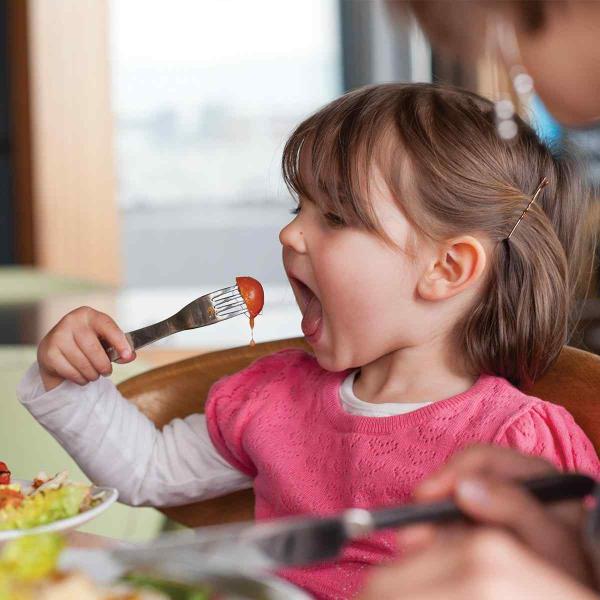HOW TO GET TODDLERS TO EAT VEGETABLES
Do your little ones refuse their greens? Don't worry it can take toddlers time to get used to the bitter taste of veggies.
Up their veg intake with these useful tips.
- Never ask your toddler to eat, try or taste. Go back to basics and start at the very beginning having fun with discovering food and exploring the origin, shape, colour, texture or smell - there are lots of different ways to experience veggies
- Children do not like unexpected surprises. Prepare children for what’s to come on their plate. You can do this by letting your child help you to get the meal ready, wash the vegetables for you, sing about the vegetables or maybe counting the pieces of chopped veg ready to be cooked.
- Use simple picture books or wall charts about vegetables to look at and talk about with your child. How many do they know or recognise? Where do they grow?
- Visit a fruit or vegetable farm, green grocers or local supermarket vegetable aisle. Point out all the different varieties of particular produce. Are there any you don’t recognize? Choose something new to take home and explore but do not talk about eating it!

FUSSY EATING
Just as you thought you knew what your toddler likes to eat, they take things into their own hands – they refuse to eat their favourite meal or are too busy throwing a tantrum to sit down at the table. We’ve put together a few tips to help you out:
- Your child’s taste will change, so always give them new dishes.
- Let your child know what is going to be on their plate.
- Be patient and leave enough time for meals.
- Don’t force your child to eat something they don’t like.
- Praise your child for eating, even when it’s only a little bit.
- Don’t give up! Remember that it can take up to 10-15 tries, so keep trying.

HOW TO TEACH TODDLERS TO FEED THEMSELVES
As your little one grows so does their independece, once they've mastered their pincer grip you can hand over more control to them.
Find handy self-feeding tips on how to begin and advice here.
- Introducing cutlery too early can actually inhibit the development of self feeding as they are an extra tool to consider and coordinate – when actually it’s much easier for toddlers to just pick up food with their fingers and put it in their mouth. Foods that you can use as a dip work well to introduce self feeding because they don’t require any cutlery – just other foods such as bread or vegetables to dip in.
- Toddlers are less likely to become fussy eaters if they are allowed to explore food with their hands and get messy, if you are constantly wiping your toddlers face and hands during a meal you are desensitising them to the sensory experiences of the food and it’s textures which prevents them from making memories and positive associations with the feel, texture and smell of the food.
- Using a mirror during a meal or snack time is a great way to let your toddler see what they are doing when they are eating something. You can have fun together watching your facial expressions as you eat your food.
- Lead by example and model for your toddler by sharing some soup and dipping bread, hommous or mashed avocado and breadsticks, stewed apple chunks or banana slices to dip in plain yoghurt.

